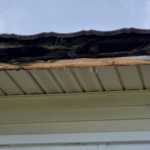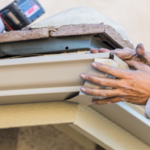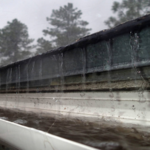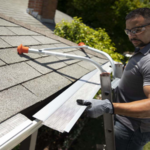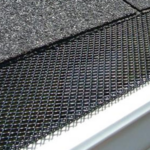Many experts recommend that you clean your gutters at least twice a year: once in the spring and once in the fall. This helps to ensure that they are clear of leaves, twigs, and other debris that can clog them up and cause problems.
Can gutters be cleaned in the winter?
Gutters can be cleaned in the winter, but it may not be the best idea. Gutters are more likely to be frozen and clogged with snow and ice in the winter, which can make them difficult to clean. It’s also more difficult to safely access gutters when they’re covered in snow and ice. If you do decide to clean your gutters in the winter, be sure to use caution and take all necessary safety precautions.
How many times a year should gutters be cleaned?
- It is generally recommended that gutters be cleaned at least twice a year in order to prevent build-up of debris that can lead to clogs.
- Spring and fall are typically the best times to clean gutters, as leaves and other organic matter are more likely to accumulate during these seasons.
- If you live in an area with a lot of trees, or if your gutters are particularly prone to clogging, you may need to clean them more often.
- To clean gutters, start by using a ladder to reach the gutters and remove any visible debris.
- Next, use a hose or a pressure washer to flush out the gutters and remove any remaining debris.
- Finally, inspect the gutters and downspouts to make sure they are free of any obstructions.
Should I clean gutters in fall or spring?
The best time to clean your gutters is in the fall, before the leaves start to accumulate. This way, you can remove any leaves or debris that might have fallen into your gutters over the summer, and you can make sure that they’re free of any clogs before the winter. Spring is also a good time to clean your gutters, as you can get rid of any remaining leaves and debris from the fall, and you can make sure that your gutters are in good condition before the rains start.
What happens if you don’t clean your gutters before winter?
If you don’t clean your gutters before winter, you could end up with a lot of problems. Gutters that are full of leaves and debris can cause water to back up and overflow, which can damage your foundation, your siding, and your landscaping. Additionally, ice can form in your gutters and cause them to pull away from your roof, which can lead to leaks and other damage.
Is it OK to walk on roof to clean gutters?
- You could slip and fall: Even if you are careful, there is always a risk that you could slip and fall off your roof. This is especially true if the roof is wet or icy.
- You could damage your roof: If you walk on your roof, you could end up damaging the shingles or other components. This can lead to costly repairs down the road.
- You could injure yourself: Even if you don’t fall off the roof, you could still injure yourself by slipping or tripping.
Therefore, it is best to leave the job of cleaning gutters to the professionals. They have the experience and the equipment to do the job safely and efficiently.
When should you start fall cleaning?
Fall cleaning is typically done in the months of September and October when the weather starts to cool down and people are getting ready for the holiday season. However, there is no set time for fall cleaning and it can be done whenever you have the time and energy to do it.
How do you prepare gutters for winter?
- Start by cleaning your gutters. This will ensure that any leaves or debris are removed so that they don’t cause a clog when the snow and ice start to fall.
- Once your gutters are clean, you can then add a layer of protection. This can be in the form of gutter guards or covers. This will help to keep the gutters from getting clogged in the first place.
- In addition to guards or covers, you may also want to consider adding heat tape to your gutters. This will help to prevent the formation of ice dams, which can cause serious damage to your gutters and home.
- Once you have added all of the necessary protection, you can then sit back and relax knowing that your gutters are ready for winter.
- Of course, you should still check on your gutters periodically throughout the winter to make sure that they are still in good condition and that there are no problems.
What is the correct fall on a gutter?
A gutter is a water drainage channel, typically located on the edge of a roof, that is used to collect and direct rainwater away from the roof and foundation of a building. The purpose of a gutter is to protect a building from water damage by channeling water away from the building and into a drain or sewer system. gutters are usually made of metal, plastic, or vinyl.
There are several factors to consider when determining the correct fall for a gutter, including the type of gutter, the building type, the climate, and the amount of rainfall. The type of gutter will affect the required fall, as some gutters are designed to handle more water than others. The building type will also affect the required fall, as some buildings are more susceptible to water damage than others. The climate will affect the required fall because in areas with high rainfall, the gutters must be able to handle more water.
What happens if you don’t clean rain gutters?
If you don’t clean your rain gutters, a number of things could happen. The most common problem is that rainwater will back up and spill over the gutters, causing water damage to your home’s fascia, soffits, and siding. In extreme cases, gutters that are full of debris can actually pull away from your home, causing even more damage.
Last Word
It’s important to keep your gutters clean so that they can do their job properly. But when is the best time to clean them? While there is no definitive answer, most experts recommend cleaning your gutters at least twice a year, in the spring and fall.







